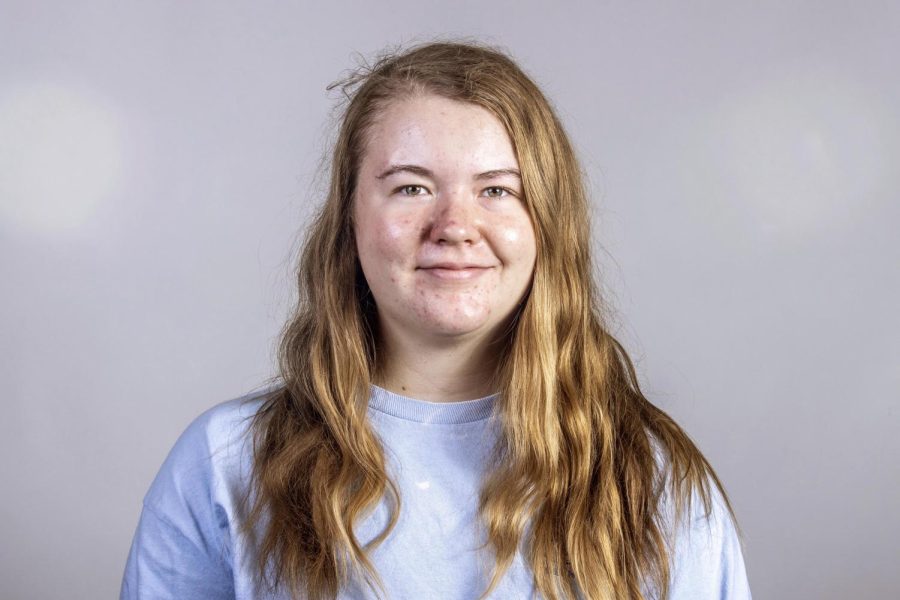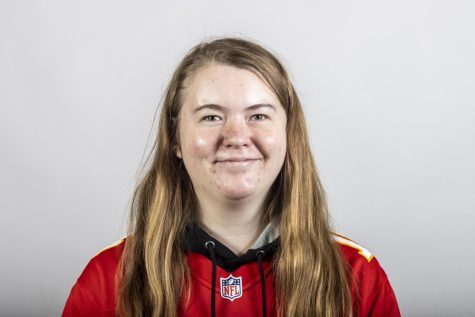Accessibility and sports should always coincide
Autumn Schulz is a junior sports media relations major and can be reached at 217-581-2812.
November 30, 2022
Accessibility in sports should not be up for compromise, ever.
There is no room for those with disabilities to be excluded from participating and attending sporting events, especially at the collegiate and professional levels.
However, here at Eastern, that inclusivity is lacking in a major way when it comes to its different sporting facilities.
It is sad knowing that someone who is wheelchair bound and wanted to attend an Eastern men’s or women’s home basketball game or volleyball game would be contained to the upper level of Lantz Arena.
Those who are not wheelchair bound and choose to sit in the lower-level bleachers know that the lower-level of Lantz Arena is where the action is.
Coming from someone who sits at the press table courtside, it is like being in the game because I am that close to the action.
At O’Brien Field, there is a small platform for those with wheelchairs to sit on, but there is no other seating available closer to the field or in a different part of the stands that provide a different view.
For those who can sit in the regular stands are immersed in the crowd when it gets exciting and can see the action from a good viewpoint.
That same feeling and opportunity should not be different for those with disabilities.
Various requirements that are set by the Americans with Disabilities Act must be met in order for a stadium to be considered accessible.
Some of the requirements, according to inclusivecitymaker, are having lowered counters at concessions and merchandise stands, wheelchair seating areas, wheelchair escorts, assistive listening devices for hearing impaired people, and dedicated spaces for service animals.
Just because the list of requirements seem long does not mean stadiums should ignore them or implement polices that are just “good enough.”
There are many collegiate and professional sports facilities that all colleges can take after in order to be more accessible.
In an article by wsrsolutions, they named Ohio State University as the most accessible collegiate football stadium because it meets all Americans with Disability Act requirements. According to wsrsolutions, it provides “wheelchair users with accessible seating, elevators, and restrooms.”
Those who attend a football game at Ohio Stadium and are wheelchair bound are “encouraged to ask an usher for assistance. They will provide transportation from the entrance gate or shuttle drop off to the accessible seats,” according to wsrsolutions.
Paul Brown Stadium, home of the Cincinatti Bengals, was named the most accessible NFL stadium by wsrsolutions. “Accessible parking, entrances, concessions, restrooms, elevators and seating are available,” according to wsrsolutions.
The stadium had 1,000 accessible seating areas, according to wsrsolutions. 1,000 accessible seats are the bare minimum and there are ways that other NFL stadiums have begun to work towards inclusivity.
U.S. Bank Stadium, home of the Minnesota Vikings, has a sensory room according to inlcusivecitymaker.com. “People with down syndrome, people on the autism spectrum or with dementia” can have a “safe haven,” according to inclusivecitymaker.
Outside of having accessible features within a sporting facility, those with disabilities should be met with friendly staff that are trained to take care of those with different disabilities.
At U.S. Bank Stadium, according to inclusivecitymaker, “two licensed behavioral specialists take care of visitors at the sensory room.” Having a well-trained staff can help make sure those with disabilities feel welcome and safe in an overwhelming setting.
The steps taken at both the collegiate and professional levels to accommodate those with disabilities have been the bare minimum thus far, but they only need to continue to improve.
Both collegiate and professional stadiums and arenas should not be allowed to say that they welcome everyone if they do not even have the resources to do so.
Another overwhelming aspect of visiting a stadium or arena is not having access to important information beforehand.
If one were to google “Lantz Arena accessibility,” they would not find much information about where to park, where to access the building, if there are restrooms and an elevator, or where to sit once they entered the building.
However, Illinois State, which is just a little over an hour North of campus, provides a page on their goredbirds.com website that describes where accessible seating can be found in both Hancock Stadium and Redbird Arena. It also describes the entrances that are accessible.
The little to no information available regarding accessibility here on campus for sporting events is not a “smaller college in the Midwest” problem, it’s an Eastern problem.
Autumn Schulz can be reached at 581-2812 or acschulz@eiu.edu

















![[Thumbnail Edition] Senior Foward Macy McGlone, getsw the ball and gets the point during the first half of the game aginst Western Illinois University,, Eastern Illinois University Lost to Western Illinois University Thursday March 6 20205, 78-75 EIU lost making it the end of their season](https://www.dailyeasternnews.com/wp-content/uploads/2025/03/WBB_OVC_03_O-1-e1743361637111-1200x614.jpg)




















































